On October 26, 2018, the small town of Mazraa Qabaliya just 11 km northwest of Ramallah witnessed a brutal assault by Israeli settlers and their military vanguard.
As Palestinian men gathered for Friday prayers under a cluster of brown and green leadtrees, they were met with teargas from the Israeli military in tandem with an organized attack by armed Israeli settlers. Youth responded by hurling stones back at the settlers and soldiers.
“It was a bloodbath that day,” Jaafar Ladadweh, 55, recalled to Mondoweiss almost four years later on the same Naalan mountaintop where two men were fatally shot.
Two Palestinians from the village were shot — Othman Ahmad Ladadweh, 33, was hit in the thigh and died that Friday evening, while Mohammad Ibrahim Shreiteh, 28, was shot in the head, succumbing to his wounds almost two weeks later, on November 10, 2018. More than a dozen were injured with live bullets while dozens more were injured with teargas and rubber bullets.
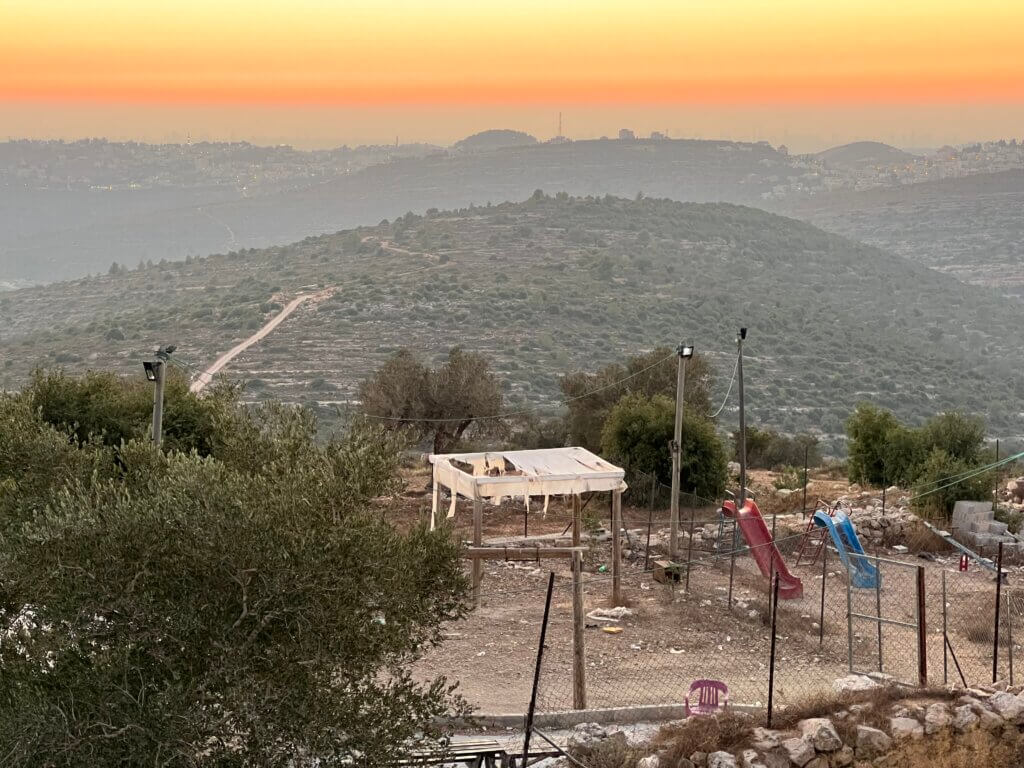
Guardians of the mountain: ‘we must keep the light on’
The confrontations in Naalan would intensify in 2018. Protests were being held in tandem with the Great March of Return in Gaza, where Palestinians marched every Friday in the thousands to protest the Gaza siege and its population of 2 million people.
Like the Israeli military response to Palestinian unarmed protest in Gaza, the youth and residents of Mazraa were met with lethal force — mostly live ammunition.
Four years later, the sunset from the top of Naalan mountain is calm and the air is crisp, with a breeze reminiscent of Ramallah’s windy evenings. The contrast of the dying colors of orange, red, yellow, and purple blue with a darker sky and almost yellow full moon commands appreciation.
Under September’s full harvest moon, a group of 11 men gather on plastic chairs and wooden benches they have set up over the years, to revive the mountain and maintain it.
“We all take turns making sure there is electricity extended and that the lights on this mountain are on at all times, to make sure there is a sign of life here” Ahmad Obeid, 62, says with a smile.
Eager and passionate about sharing their story of successfully holding on to their homes, Obeid points at one of the flickering lights hanging from a treehouse they had built months ago to encourage visitors to come and help protect the mountain from settler takeover.
“We must keep the light on,” Obeid said, his tone passionate. “We must keep the light on here on the mountain at all times. Once it’s off, know that something is wrong, that there has been an attack,” he said to Mondoweiss.

Abandoned by parties and actors that are supposedly responsible, including the Palestinian Authority (PA), the mountain was nurtured and developed through the power of community initiatives and youth volunteers.
Through collective conversations, the village of Mazraa Qabaliya organized itself into committees to renovate, preserve, and document the archeological artifacts that sprawl across and inside the mountain.
“When we pray here, you would find settlers coming to also pray,” Ali Shreiteh, 54, told Mondoweiss. Shreiteh had been documenting the historical significance and archeological richness that is hidden across the mountain top, from Roman wells to centuries-old antiques.
Over the past four years, organized settler visits and attacks on the site in coordination with Israeli army have intensified. These visits seek to establish a presence on the land, which in turn would create a justification for the annexation and forcible takeover of Palestinian lands by judicial decree.
Yet, these sinister practices do not occur in isolation. They are embedded in, and enforced through, broader Israeli policies denying Palestinians ability to use their resources and lands for growth and building of healthy and unified communities.
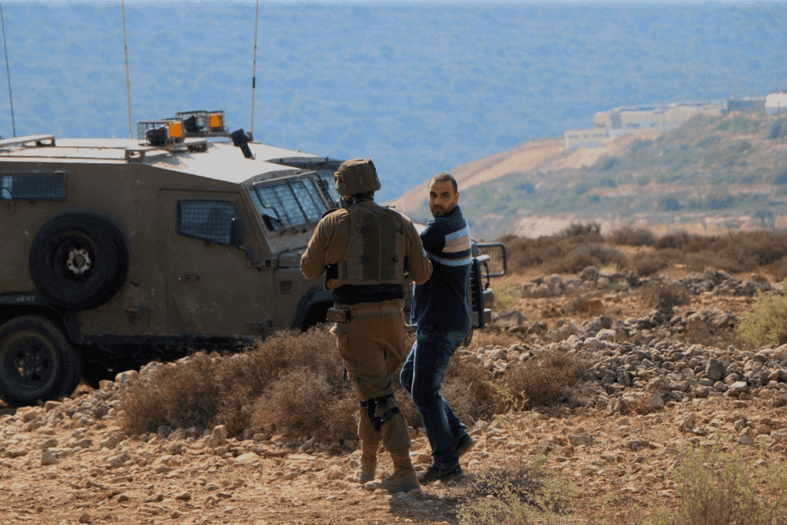
Greenlighting ethnic cleansing in Area B
Naalan mountain is located in Mazraa Qabaliya, a town known for its agricultural produce and capacity for sustainable water infrastructure.
Mazraa Qabaliya and its Naalan mountain are also categorized as “Area B” under the Oslo Accords, which places them under the civic and administrative control of the PA and military control of Israeli army. This power vacuum, combined with the lack of foreign support, has meant that the town residents have had to take it upon themselves to counter the continuous impunity for armed Israeli aggressions and organized settler crimes.
Since the growth of settlement expansion to Areas B in 2017, added to the peak in settler violence in 2018, the townspeople have directed their efforts to ensure that Naalan mountain remains vibrant and accessible to Palestinians. This has largely only been possible through constant confrontation whereby Palestinians must face armed settlers and soldiers with either their voice, their bodies, or the hurling of stones — a crime punishable by up to 10 years under Israeli military regulations.
“They want to take this mountain by any means, even if it is fabricating a historical association with it,” Yousef Ali, 45, told Mondoweiss.
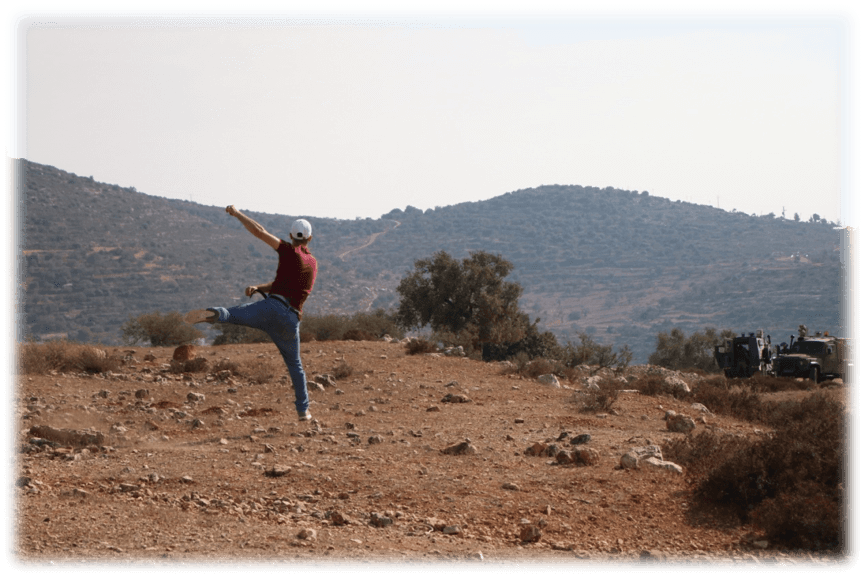
According to the Oslo Accords, settlers expanding to Area B are not only in violation of international law, but also Israeli law. The clandestine manner in which Israel takes over lands has been well-documented, but with little repercussions. In 2018, former US president Barack Obama was reportedly “shocked” at the systemic nature of Israeli settlements and their fragmentation of Palestinians from one another.
This settler expansion has been devastating to Palestinian farmers. Already economically deprived of more than 63% of the most fertile and grazing land as well as agricultural resources in Area C, farmers in Mazraa Qabaliya and the rest of Area B are restricted by Israeli veto power over building and constructing water wells and drilling into reservoirs or springs.

The wells around the Naalan mountain top could provide the community with the resources that would allow for sustainability and income generation in the face of the economic depression plaguing Palestinian communities. In fact, the families and communities near Naalan have renovated some old wells, but the energies of the townspeople continue to be occupied mainly with surviving and confronting Israeli efforts to takeover their lands for the purpose of expanding illegal settlements.
In this way, not only are settlements furthering Israeli theft and abuse of natural resources, but are also impeding Palestinian capacities to develop what resources they have.
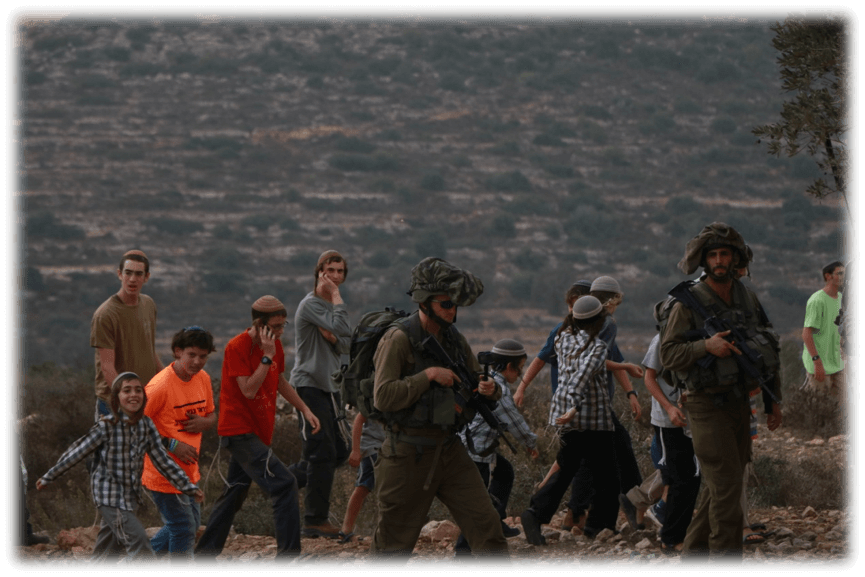
In contrast, illegal Israeli settlers are not only provided with Israeli court-ordered military force as protection, but also governmental financial support from the “Settlement Division” of the World Zionist Organization (WZO) to help link agricultural and natural resource networks with a growing physical settler infrastructure..
In June and July of this year, the WZO declared plans to invest additional $ 8.5 million USD in connecting and legitimizing illegal outposts in the West Bank, a policy pushed forward by former Prime Minister, Naftali Bennet. And not only are settlements expanding but they are even creeping towards Area B of the West Bank also in violation of the Oslo Accords.
What this adds up to is that Palestinian communities lack nearly any form of financial, legal, emotional, or logistical support in their efforts to defend their land while Israeli settlers are provided with international impunity, constant and growing economic funding, as well as protection from its military, one of the most advanced in the world.
Call for solidarity
With what little remains, Palestinian towns and villages are constantly attempting to salvage what they have been able to hold onto in the face of a increasingly emboldened settler population, which maintains a strong hold on military power and international public opinion.
As Palestinian communities attempt to safeguard their communities from settler attacks, they are calling on supporters to join them in ensuring that Palestinian lands remain alive with Palestinian lives. “Just come be with us, build with us, bring nothing but will and joy,” Ladadweh says as the evening fades into darkness, as an LED lightbulb flickers behind him.
In that moment, words from earlier in the evening seemed to hang in the air and resonate with the 11 men firmly planted at the top of Naalan mountain: “the light must stay on.”
Mariam Barghouti
Mariam Barghouti is the Senior Palestine Correspondent for Mondoweiss.
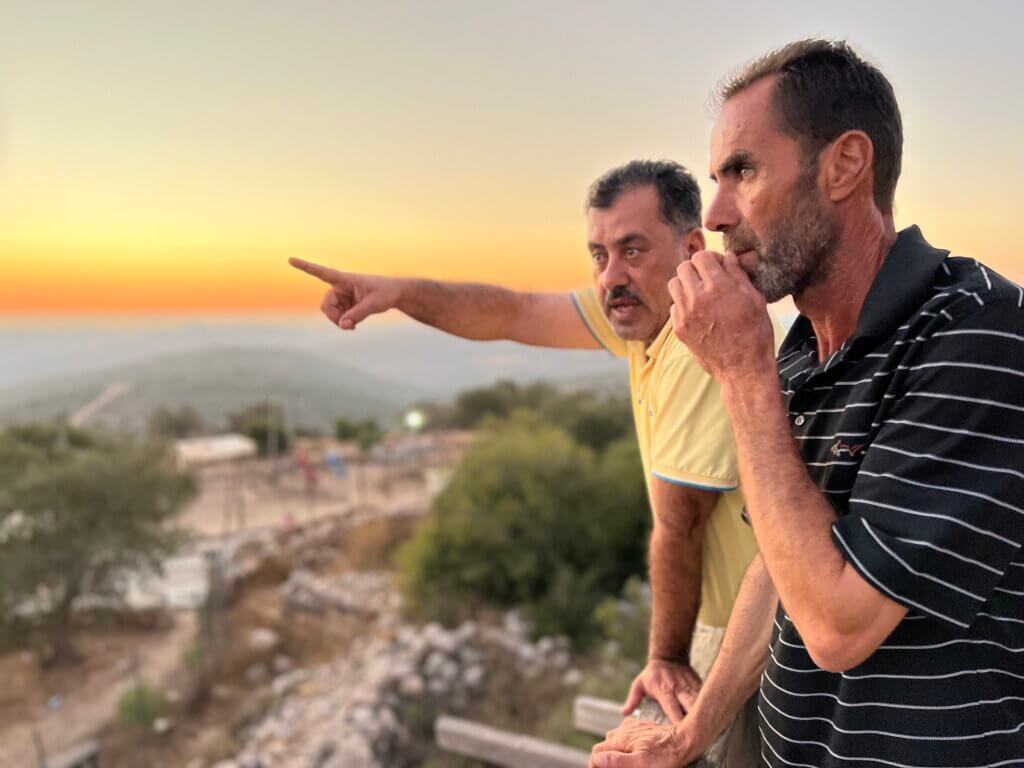
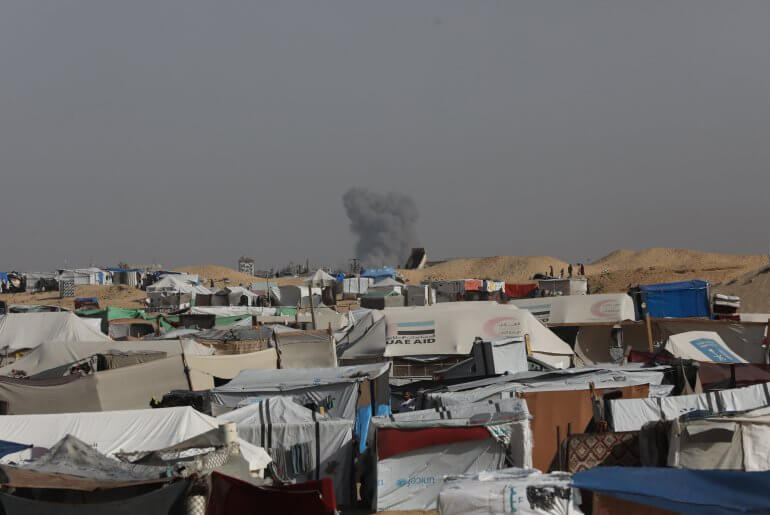
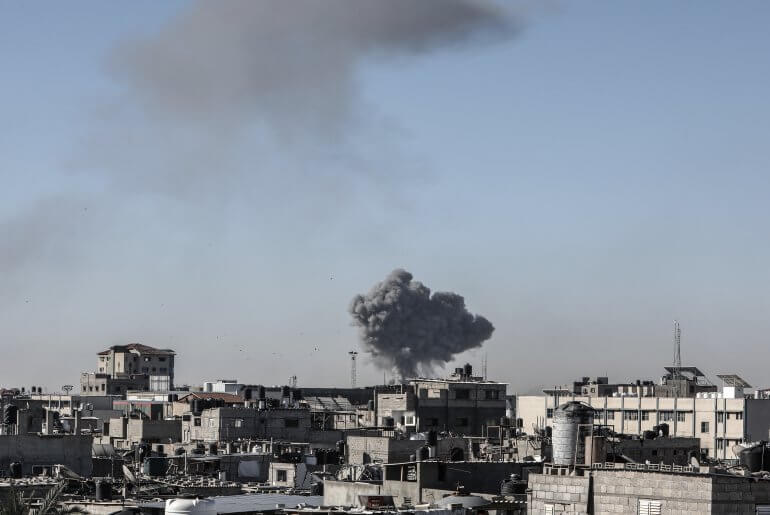
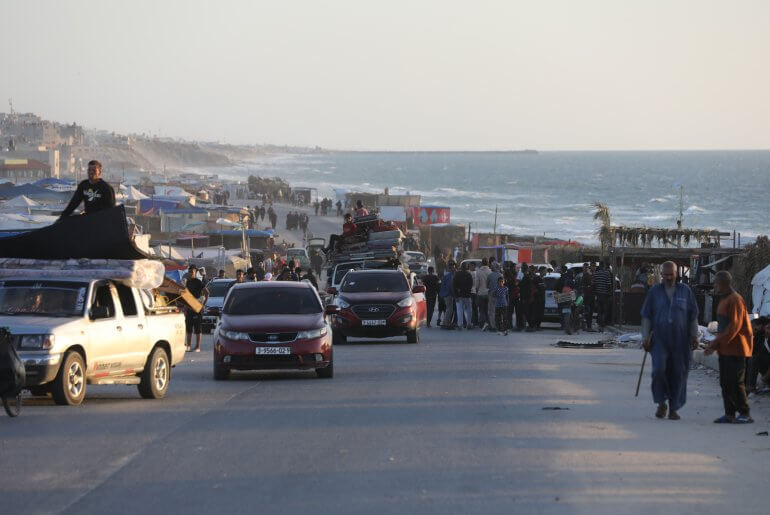
You don’t “settle” an already-settled land. This is colonisation to establish Jews/Zionist-only communities so involving a degree of ethnic cleansing.
(855) The Palestinian View: The Lesson of Sabra and Shatila (Ep. 2) – YouTube
Just released VIDEO:”The Palestinian View: The Lesson of Sabra and Shatila” (Ep. 2)
“In this episode of ‘The Palestinian View’, Palestinian intellectual and editor of The Palestine Chronicle Dr. Ramzy Baroud remembers the massacre of Sabra and Shatila, carried out by Lebanese Phalangist militias operating under the command of the Israeli army in September 1982. How long do you think Israel will continue to act with impunity?”
1 of 2
‘Avenging Sabra and Shatila’: On Israeli Massacres and Palestinian Resistance – Palestine Chronicle
‘Avenging Sabra a& Shatila’: On Israeli Massacres & Palestinian Resistance” Sept. 14, 2022, by Ramzy Baroud.”September 16 marks the 40th anniversary of the Sabra & Shatila massacre, the killing of around 3,000 Palestinians at the hands of Lebanon’s Phalangist militias operating under the command of the Israeli army.
“Four decades have passed, yet no measure of justice has been received by the survivors of the massacre. Many of them have died, & others are aging while they carry the scars of physical & psychological wounds, in the hope that, perhaps, within their lifetime they will see their executioners behind bars.
“However, many of the Israeli & Phalange commanders who had ordered the invasion of Lebanon, orchestrated or carried out the heinous massacres in the two Palestinian refugee camps in 1982, have already died. Ariel Sharon, who was implicated by the official Israeli Kahan Commission a year later for his ‘indirect responsibility’ for the grisly mass killing & rape, later rose in rank to become, in 2001, Israel’s Prime Minister.
“Even prior to the Sabra & Shatila massacre, Sharon’s name was always affiliated with mass murders & large-scale destruction. It was in the so-called ‘Operation Shoshana’, in the Palestinian West Bank village of Qibya in 1953, that Sharon earned his infamous reputation. Following the Israeli occupation of Gaza in 1967, the Israeli general became known as ‘The Bulldozer’, & following Sabra & Shatila, ‘The Butcher’.
“The Israeli Prime Minister at the time, Menachim Begin, also died, exhibiting no remorse for the killing of over 17,000 Lebanese, Palestinians & Syrians in the 1982 invasion of Lebanon. His nonchalant response to the killings in the West Beirut refugee camps epitomizes Israel’s attitude toward all the mass killings & all the massacres carried out against Palestinians in the last 75 years. ‘Goyim kill Goyim, & they blame the Jews,’ he said.
“Testimonies from those who arrived at the refugee camps after the days of slaughter depict a reality that requires deep reflection, not only among Palestinians, Arabs & especially Israelis, but also humanity as a whole. (cont’d)
2 of 2
“The late American journalist Janet Lee Stevens described what she had witnessed: “‘I saw dead women in their houses with their skirts up to their waists & their legs spread apart; dozens of young men shot after being lined up against an alley wall; children with their throats slit, a pregnant woman with her stomach chopped open, her eyes still wide open, her blackened face silently screaming in horror; countless babies & toddlers who had been stabbed or ripped apart & who had been thrown into garbage piles.’
“Dr. Swee Chai Ang had just arrived in Lebanon as a volunteer surgeon, stationed at the Red Crescent Society in the Gaza Hospital in Sabra & Shatila. Her book, ‘From Beirut to Jerusalem: A Woman Surgeon with the Palestinians’, remains one of the most critical readings on the subject.
“In a recent article, Dr. Swee wrote that following the release of photographs of the ‘heaps of dead bodies in the camp alleys’, a worldwide outrage followed, but it was short-lived: ‘The victims’ families & survivors were soon left alone to plod on with their lives & to relive the memory of that double tragedy of the massacre, & the preceding ten weeks of intensive land, air & sea bombardment & blockade of Beirut during the invasion.’
“Lebanese & Palestinian losses in the Israeli war are devastating in terms of numbers. However, the war also changed Lebanon forever &, following the forced exile of thousands of Palestinian men along with the entire PLO leadership, Palestinian communities in Lebanon were left politically vulnerable, socially disadvantaged & economically isolated.
“The story of Sabra & Shatila was not simply a dark chapter of a bygone era, but an ongoing moral crisis that continues to define Israel’s relationship with Palestinians, highlight the demographic & political trap in which numerous Palestinian communities in the Middle East live, & accentuate the hypocrisy of the West-dominated international community. The latter seems to only care for some kind of victims, & not others. In the case of Palestinians, the victims are often depicted by western governments & media as the aggressors. Even during that horrific Israeli war on Lebanon 40 years ago, some western leaders repeated the tired mantra: ‘Israel has the right to defend itself.’…”